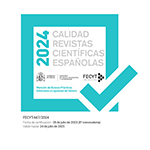Drawing (im)mobility. potential and limitations of a child-centred participatory technique
Abstract
Considering the scarce methodological literature on child migration and mobilities, as well as the incomplete approaches to the phenomenon, this article analyses the potential and limitations of a child-centred participatory technique used in a study about child mobility in the Barcelona metropolitan region. It consists on drawings made by children (10-12 years old) which represent their (im)mobility trajectories in the form of maps. Situating the drawings in the debates on how to conduct research with children, and stressing the specific challenges of studying mobility, four types of reaction to the technique are presented: from confusion to fluidity in the narratives; the technique as a school exercise; resistances to the technique; and enhancing the creativity, expressivity and reflexivity. These reactions are contextualised in the fieldwork carried out in two schools, showing the influence of the school environment in the resulting visual productions and comments about them. Finally, the articulation between verbal and visual narratives is examined, delving into the performativity of the technique in its ethnographic and relational dimension.
Downloads
Article download
License
In order to support the global exchange of knowledge, the journal Sociedad e Infancias is allowing unrestricted access to its content as from its publication in this electronic edition, and as such it is an open-access journal. The originals published in this journal are the property of the Complutense University of Madrid and any reproduction thereof in full or in part must cite the source. All content is distributed under a Creative Commons Attribution 4.0 use and distribution licence (CC BY 4.0). This circumstance must be expressly stated in these terms where necessary. You can view the summary and the complete legal text of the licence.










